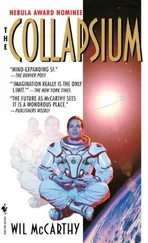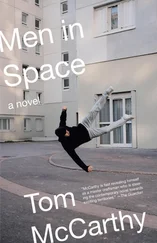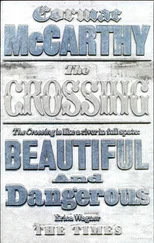“Expected end of next week,” Naz said.
“End of next week! That’s an eternity away. Can’t our man get us a sneak preview?”
“That is a sneak preview,” Naz told me. “It hasn’t been written yet.”
“What the fuck do I pay taxes for?” I asked.
“Oh,” said Naz, “Matthew Younger’s been looking for you.”
“Fuck him,” I said, and hung up.
The next day I went back to the library. I’d read all there was to read about crime-scene searches, so I started reading about guns. I pored over a report by one Dr M. Jauhari, M.Sc., Ph.D., F.A.F.Sc. and Director of the Central Forensic Science Laboratory, Calcutta. At least he was in 1971, when the report was published. Dr Jauhari explained that a firearm functions like a heat engine, converting the chemical energy stored in the propellant into the kinetic energy of the bullet. By way of illustration he compared and contrasted the workings of a firearm with the workings of the internal combustion engine. In the latter, vaporized gasoline is compressed in the cylinder by the piston; then the spark plug fires the gasoline charge, converting it into expanded gas; the pressure resulting from this gas’s expansion in turn results in the pressure which drives the piston. That’s how a combustion engine works, or how it worked in 1971. A firearm, Dr Jauhari explained, is similar: the primer, the propellant, the chamber and the bullet correspond to the spark plug, the gasoline, the cylinder and the piston-only instead of returning to its starting point and firing off again, the bullet continues right on out into the air. An engine is like a single shot that endlessly repeats itself.
Dr Jauhari was thorough. Before describing types of guns he sketched their function:
A firearm,
he wrote,
provides a means by which a missile can be hurled from considerable distances with considerable velocity. Its capability to deliver a death blow to a human being even at long ranges of firing makes it a weapon of choice for homicidal purposes. It is occasionally found to get involved in suicidal and accidental shootings also.
People never stop to think about these basic facts when they watch wars and cop shows on the television. People take too much for granted. Each time a gun is fired the whole history of engineering comes into play. Of politics, too: war, assassination, revolution, terror. Guns aren’t just history’s props and agents: they’re history itself, spinning alternate futures in their chamber, hurling the present from their barrel, casting aside the empty shells of past.
One other thing about guns: their beauty. As I flicked past the photos, diagrams and illustrations Dr Jauhari used to show the evolution of guns over the ages and the differences between pistols, rifles, machine guns and sub-machine guns, it grew on me how beautiful an object a gun-any gun-is. Some are more beautiful than others, of course, depending on the sleekness of their finish, the curvature of the handle, the thickness of the hammer and a dozen other factors. But just being guns makes them all beautiful. That things so small, so pleasing to the eye, so friendly to the touch-so passive-can contain such force is breathtaking. Then the way they hang just off the body, cradled tenderly like babies, sleeping-till the moment they erupt and carry beauty to another level. No beauty without violence, without death.
Our mole came through eventually. Naz brought the report over to my flat one evening.
“When we ask the Council for permission to use the space,” he said as he handed it to me, “we’ll have to decide what type of licence to apply for. We could…”
“Later,” I said. I took the report and closed the door on him.
It had come in a sealed, unmarked envelope. As I opened this I felt that tingling spreading outwards from the base of my spine. The pages were flaky and the text badly aligned; it had been Xeroxed in a hurry. The language it was written in was clear, which surprised me. I’d expected it to be full of police terminology-people “proceeding” instead of moving, “perpetrators” instead of people and with every noun and action prefaced by “alleged”. In fact, it was stark and straightforward:
The killers,
it said,
parked their car beside the Green Man public bar, stepped out and opened fire with Uzi sub-machine guns. The victim got onto his bicycle and tried to ride away, but turned too sharply into Belinda Road and fell onto the tarmac as the front wheel twisted under him.
I pictured the front wheel twisting and him going down. He must have known then that it was all up. He’d got up again, the report said, and taken two or three more steps down Belinda Road while the killers fired on him some more. Then he’d gone down a final time. He’d been dead by the time the ambulance arrived.
There were pages of detailed diagrams. They showed the layout of the area in which the shooting had happened: the phone box, the street, kerb, bollard, even a puddle into which some of the victim’s blood had flowed. They showed his position first as he stood in the phone box, then as he tried to escape, then as he fell, got up and fell again. They showed the killers’ positions as they parked their car and walked towards him, firing. The three men were drawn in outline with numbers inside the outlines, like you get in children’s colouring books. There were arrows indicating movement and direction.
The longer I stared at these pictures, the more intense the tingling in my upper body grew. It had moved into my brain, like when you eat too much monosodium glutamate in a Chinese restaurant. My whole head was tingling. The diagrams seemed to be taking on more and more significance. They became maps for finding buried treasure, then instructions for assembling pieces of furniture, then military plans, the outline of a whole winter’s arduous and multi-pronged advance across mountains and plains. I drifted off into these plains, these mountains, floating alongside the generals and foot soldiers and cooks and elephants. When I looked up from the diagrams again, Naz was there, standing in front of my sofa with another man.
“When did you come in?” I asked him. “Who’s this?”
“This man’s a doctor,” said Naz. “I’ve been here for the last hour and a half.”
I tried to ask him what he meant by that, but the words were taking a long time to form. The other man opened a bag and took a pen or torch out.
“You were just sitting here,” said Naz. “You’d gone completely vacant. You didn’t notice me, or hear me. I waved my hand in front of your face and you didn’t even move your eyes.”
“How long ago was this?” the doctor asked.
“I’m fine,” I said.
“The whole last hour and a half,” Naz told him. “Until just now, when you came in.”
“Has he experienced any kind of trauma recently?” the doctor asked. He switched his torch-pen on. “What’s his name?”
“I’m fine,” I said. “Send this man away.”
“Keep your head still,” the doctor said.
“No,” I said. “Send this man away, Naz, now. Get off my property or I’ll have you arrested.”
“I can’t help you if you won’t let me help you,” he said.
I looked past his ear and thought I saw another cat fall off the roof. I told this man:
“I’m ordering you to leave my property this instant.”
He stood still for a while. Naz did too. The three of us were static for several moments-and while we were I didn’t mind this doctor being here. I’d even have let him stay if he’d only behaved himself and not moved. Eventually, though, he turned to Naz and motioned with his eyes towards the door, then slipped his torch-pen back into his bag and left. Naz saw him out. I heard the two men murmuring together as I went into the bathroom and washed my face. I washed it in cold water and didn’t dry it straight away, but let it drip while I stared at the crack on the wall. I watched the crack as I listened to the doctor walking down the stairs.
Читать дальше












